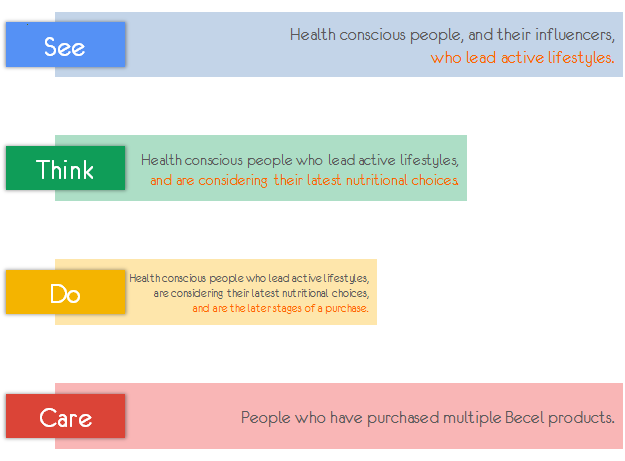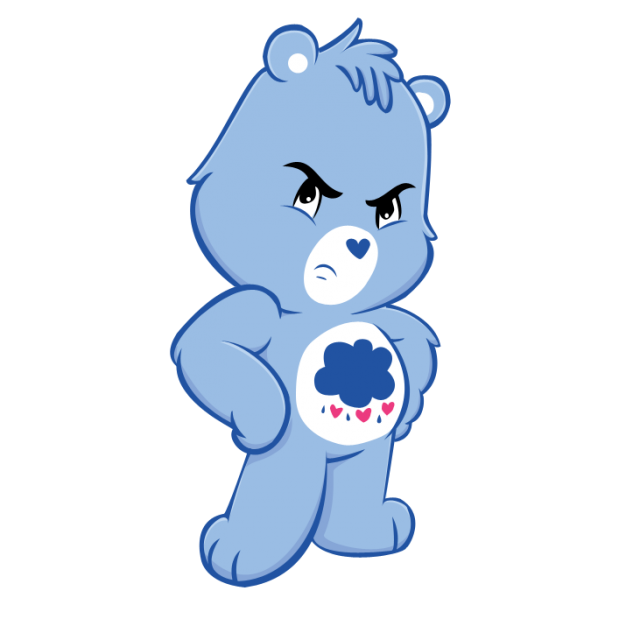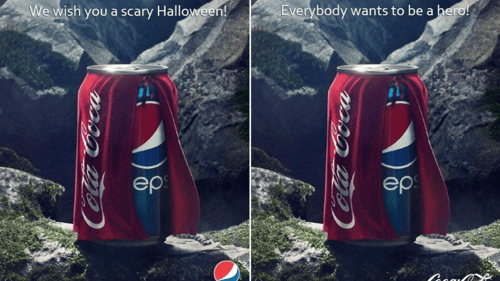3 SEO mistakes you’re probably making – and how content marketing can fix them

Posted by 256
March 15th, 2016
‘Everything you’ve heard about SEO is lies for children.’
Spoken like a true industry specialist, Jono Alderson from Lindex rebuffs the conventional ways of the SEO trade. Okay, so this may be a little extreme (try telling a 7 year old the difference between a 301 and 302 redirect).
But many of us have been looking at SEO from the wrong perspective, as we constantly adapt our tactics to please an evasive algorithm. Essentially, we've been chasing the SEO dragon. This is a tiring battle, and it’s about time we took the blue pill of SEO.
We’ve been stuck thinking tactically, asking questions like ‘How do I recover from the latest issue?’ rather than ‘How do I do better marketing?’
SEO gets its kudos from stats, analytics and big data. It’s not that we don’t love all this data - it has transformed the way we do marketing, allowing us to measure results and test ideas with confidence. But sometimes, we can get lost in the number crunching, in the charming jargon of technical SEO.
Most marketing managers are suckers for hard data. Terms like ‘high keyword volume’ and ‘Low Cost Per Click’ can make even the strongest of CMOs go weak at the knees and positively swoon.
In the midst of all this romance, we sometimes forget about the users sitting in front of their screens - their everyday behaviour, and how we can harness it in our SEO strategies. Where’s the humanity gone, man? 
Language and social science have a bigger part to play nowadays; language is how we make sense of the world, and we shouldn't take for granted what it can tell us about our audience (as content marketers, we also happen to be complete language nerds).
No Pain-point, No Gain
Content marketing has a thing for pain-points. Figuratively, that is. We don’t all lift heavy and eat nails for breakfast.
We’re more the big-softie, caring types, as we’re preoccupied with our consumers’ needs.
Here’s an example:
Teresa is your average 28 year old coffee junkie. Tragically, her coffee machine is giving up the ghost, and she just can’t take another mouthful of foamy water. Don’t get too excited, Nespresso, she’s not ready to buy a new one just yet (it was a gift from Auntie Geraldine).
But that doesn’t mean she isn’t part of a lucrative online audience. She’s just using a different language to address a pain-point at an earlier stage of the buyer journey. She could be using terms like ‘watery coffee’ or 'broken coffee machine'.
So, instead of asking: ‘What is the highest ranking keyword in my industry?’ we need to ask ‘What story is a keyword telling me about the user and their stage in the journey?’
Because all search terms tell a story about consumer behaviour, and most of those searches can be traced back to a customer need or ‘pain-point’.
Content marketers build their content strategies around these pain-points – not just to make sales and conversions, but to connect to a user at their hour of need.
Are you making these 3 SEO mistakes?
What we're saying is that SEO should be at the heart of your content, so today we're looking at a few areas where marketers are going wrong and diving head-first towards a metaphorical breakup. They are:
1. Trying to convert their audience at every touch point
These are the guys who target one section of their audience only – regardless of the channel. You know who you are. Even though different digital platforms lend themselves to different forms of language (LinkedIn = formal/professional discussion, while PPC = direct/punchy sales-speak), many brands still talk ‘product’ on every channel, at every chance they get – and they will use the same language to do so.
To extend the charm offensive metaphors, these convert-aholics are those guys you meet in a pub who try and give their number to half the punters. It's just not gonna work.
Let's take a look at this online buyer journey for Becel margarine, as an example. This reveals the conflicting behaviour of the same audience at all stages of the buyer journey. It also reveals that it is only a section of this audience who are likely to make a purchase there and then (those at the ‘‘Do’ stages of the buyer funnel). Trying to convert the audience at the 'See' and 'Care' stages will be expensive and, to the most part, ineffective.
2. Putting pressure on the wrong KPIs
Many marketing managers are given KPIs which relate only to conversions and sales. CMOs want to know where the sales and the bums on the seats are.
Even though only a section of their potential online audience is at the conversion stage of the process, this is where nearly ALL of a marketer’s KPIs live.
They have an idea of the size of the audience on those online channels, and they’ve employed a search specialist to improve their rankings in the top industry keywords. They are focused on small wins and month-to-month progress when it comes to measuring SEO and success online, by tallying ‘website scores’, ‘traffic volume’ and ‘page speeds’.
But what they really need to focus on is the whole customer experience. Jono Alderson shares how this might be acheived:
“This requires a large conceptual leap from businesses thinking about ‘How well is my website ranking, and what can we do to improve it’ to ‘What’s the experience which people who search for things I do/provide/sell like, and how can we better manage that?’The underlying SEO tech just supports and facilitates the process of acting on this.”
Another problem is not giving engagement metrics the credit they deserve.
The poor, neglected other stages of the buyer journey deserve some KPI kudos too. Impressions, reach, reads, and comments can be just as important. These metrics are not only evidence of brand awareness, they are driving the customer to the next stage of the journey, with your brand top of mind. Not bad, little fellas.
3. Thinking ‘keyword volume’ and not ‘keyword translation’
Marketers need to look at the language being used by their audience at every stage of the buyer journey - not just when they’re ready to buy.
Many of us are chasing high volume, high value keywords instead of tailoring those fuzzy search terms and long-tail keywords to work for our strategy. They may have lower search volume, but these leads can still be very high quality.
Some long-tail keywords actually show more commercial intent than high volume keywords. Take, for example, the difference between the high volume keyword 'Furniture', compared to the long-tail, low volume keyword, 'antique love seat'. The searcher of the latter keyword 'antique love seat' has put a lot more thought into this research - and they clearly have a good idea of what they want. They almost have their card out on the table.
The Content Marketing Quick Fix
If you're guilty of any of the above, don't worry. You can take a plaster from the content marketing box, and put your SEO strategy on the mend by focusing on user experience over page rank, with these 4 remedies.
1. Get to know your customer through fuzzy keywords
Fuzzy keywords may sound soft and even a bit ineffective. But when used with the right content, at the right time, they can cut through clutter and improve your SEO.
Fuzzy keywords are found by translating non-commercial search terms, and by inferring a ‘need-group’ from the language users input on search.
So for example, in the example of Teresa and her broken coffee machine, she might search for 'watery coffee'. While that's not a strictly commercial term, it's telling us (or coffee machine retailers) that her coffee machine is a pain-point and it may need to be replaced.
Fuzzy but effective!
Keyword.io is a great free tool that allows you to search through hundreds of long-tail search terms related to your industry - some of them more bizarre than others, but all of them inspiring.
BuzzSumo is a content marketing tool which will give great insight into trending and topical content within your industry, as it gives you list of the highest performing, clickable headlines.
2. Leverage language and consumer behaviour
People search because they have a question or a need, and your content performs because it answers those questions at the right time. That's why you need to optimise your content to suit the type of searches your audience makes at every stage of the buyer journey.
Taking the Becel brand as an example, here is an idea of how this brand could vary their search terms and content topics, ranging from a soft sales 'lifestyle' approach at the earlier stage of the funnel, to a more product centric approach to drive conversions.
See: 10 of the most scenic walking routes in Dublin
Think: How to lower my cholesterol without going on a diet
Do: 4 easy Becel recipes to help lower my cholesterol
Care: How a change of lifestyle has changed my life (case study of Becel customer)
3. Have a range of KPIs for each stage of the buyer journey
We should be creating metrics for every stage – for example, the awareness, or ‘see’ stage is where the demand for a product is nurtured, not measured.
Example of KPIs for each stage of the process:
- See: impressions, geographic/demographic reach
- Think: micro-conversions such as: downloads, apps, email addresses, new website visits, social metrics
- Do: conversions, sales
- Care: referrals, return visits
4. Target media sites and review sites with native content
Focusing on the customer experience as an over-arching goal for your SEO strategy opens a whole new range of methods to play with.
Many of these users will be at the ‘'See' or 'Think’ stage of the funnel, which means your targeting will be aligned to customer pain points and relevant search topics, and not just targeted at user demographic only.
Want to chat about SEO and content marketing?
Is it time for you to think outside the technical SEO box, and look at the bigger picture? If that's a yes, we'd love to hear from you - so instead of chasing that SEO dragon, you can start improving your customer experience.
We’re always ready to chat if you need any advice on optimising your SEO the content marketing way. In the meantime, follow us on Facebook, Twitter, and Pinterest to keep up to date with all the latest news on content marketing and digital media.

Previous Post
What content marketers can learn from Kanye West
Next Post

Pick the right Facebook contest winner with Agoro Pulse
Subscribe Here
You may also like...
Nicole Thomsen | Dec 11, 2023
Nicole Thomsen | Nov 6, 2023
Nadia Reckmann | Nov 2, 2023









